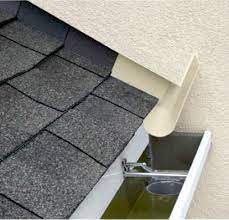I often get asked "what's the craziest thing you've seen at an inspection?" or "what are some of the most common things you find?" Every inspector has their shocking stories and maybe I'll make a separate post about those, but I think commonly found issues are fascinating questions. It may vary by region or even by neighborhood, but here is my list of top five commonly found issues over the last two years.
1) Inadequate TPR drain pipe installation
Water heaters have safety mechanisms around the top of the tank. It's called the temperature-pressure relief (TPR) valve. If your water heater is experiencing excessive pressure inside the tank or extremely high temperatures, this valve allows some of this hot, pressurized water to escape in an effort to self-soothe. There should be a drain pipe connected to the valve that can within stand such temperatures and pressures -- that means PVC pipe would not work. Appropriate pipe materials include copper, PEX, and CPVC. Another caveat to the installation is that the dimension of the pipe should remain the same and can not decrease at connectors. I often see elbow connectors that are smaller in diameter which would be like putting your thumb over part of a water hose; it intensifies the pressure which actually adds to the problem!
2) Missing kickout flashing
This one actually surprises me the most. I never knew how important such a tiny piece of aluminum was until I started inspecting homes. The purpose of kickout flashing is to divert roof runoff away from walls and windows below the roofline. It literally kicks water out away from the house. I have seen five-year-old luxury homes with missing flashing that caused the sale to fall through due to water damage around the interior window frame. You can buy a piece of kickout flashing at major hardware stores for roughly $12.
3) Sink leaks
Kitchen and bathroom sink leaks are normally such inexpensive repairs, but if left unattended they can lead to replacing cabinet bases, flooring, subflooring, and even floor joists/beams. Whew!
4) Deteriorated caulk around windows
Remember that windows are areas prone to gaps since we're aligning two dissimilar materials (wood framing members and metal/vinyl window frames). Wood expands and contracts slightly with the seasons so we need to make sure any gaps are filled to prevent ants and other critters from accessing the home. Sealing these gaps also helps weatherize your home which makes it more energy efficient.
5) Old HVAC systems
Sometimes everything in the house is updated except for one upstairs furnace. Even a mini split system is $1k, so pay attention to the age of HVAC units. The average service life of air conditioners and heat pumps is 15-20 years. Electric furnaces last roughly 20-30 years, while gas furnaces last about 15-20 years. Home inspectors use the manufactured date printed on the data plate to help estimate the age of the unit. Newer units often print the manufacture date on the data tag (like photo below), but others are coded in the serial number.

Would you like to know about your current or prospective home? Honeybee would be honored to inspect it thoughtfully and thoroughly. I am a licensed home inspector and serve all of Central Arkansas. Please call or text 502-501-3553 or email at honeybeehomeinspectionllc@gmail.com













Comments